Hol Dir den wöchentlichen SPARTANAT-Newsletter.
Dein Bonus: das gratis E-Book von SPARTANAT.
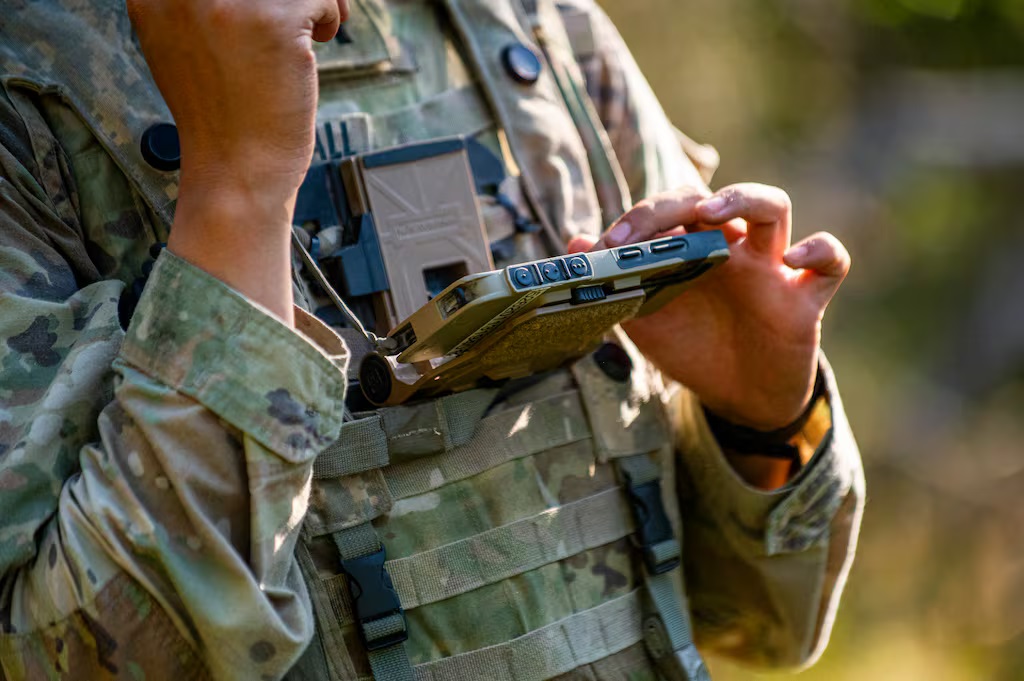
High-Tech für die Infanterie
Die US Army verwndet neue Technologien wie die Black Hornet Minidrohne, das LTLM II und das Joint Effects Targeting System, um die Aufklärung und Zielansprache für Soldaten zu verbessern. Geplante Innovationen wie die STUB-Batterie könnten die Effektivität weiter steigern.
Die aktuellen Schlachtfelder werden von neuen Technologien dominiert. Selbst der normale Infanterist bekommt heutzutage viel High-Tech-Ausrüstung. Hier sind die aktuellen High-End-Geräte, die die US-Army plant, für ihre Soldaten zu übernehmen oder bereits übernommen hat.
Black Hornet
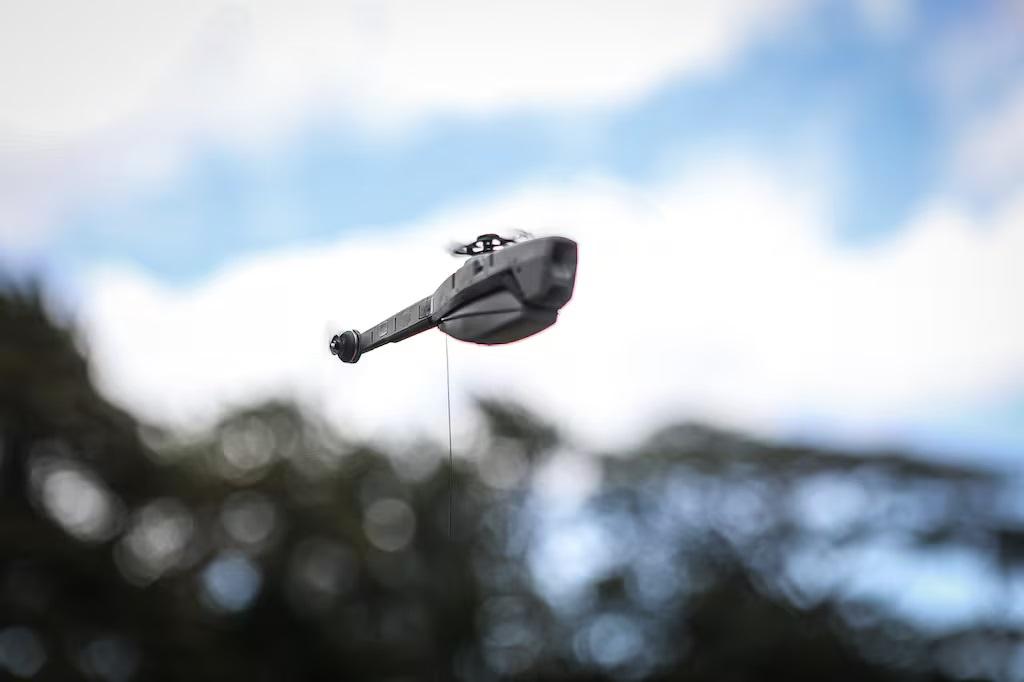
Die Army hat seit 2019 mehr als 5.000 Black Hornets, auch bekannt als Soldier Borne Sensor system, in der Truppe im Einsatz. Das Kurzstreckenaufklärungsgerät ist eine Minidrohne, ein handflächengroßer Hubschrauber, den die Soldaten verwenden können, um eine schnelle Aufklärung durchzuführen oder in ein Gebäude zu schauen.
Soldaten des 1. Bataillons des 508. Fallschirminfanterieregiments waren eine der ersten Einheiten, die mit der Minidrohne nach Afghanistan in 2019 gebracht wurden. Das ursprüngliche Gerät hatte eine geschätzte Flugzeit von 25 Minuten und konnte 1.000 bis 1.500 Meter zurücklegen. FLIR Systems gewann den vollen Vertrag über 40 Millionen US-Dollar in 2019. Eine verbesserte Version wird ab Sommer 2025 im Einsatz sein.
Laser Target Locator Module II
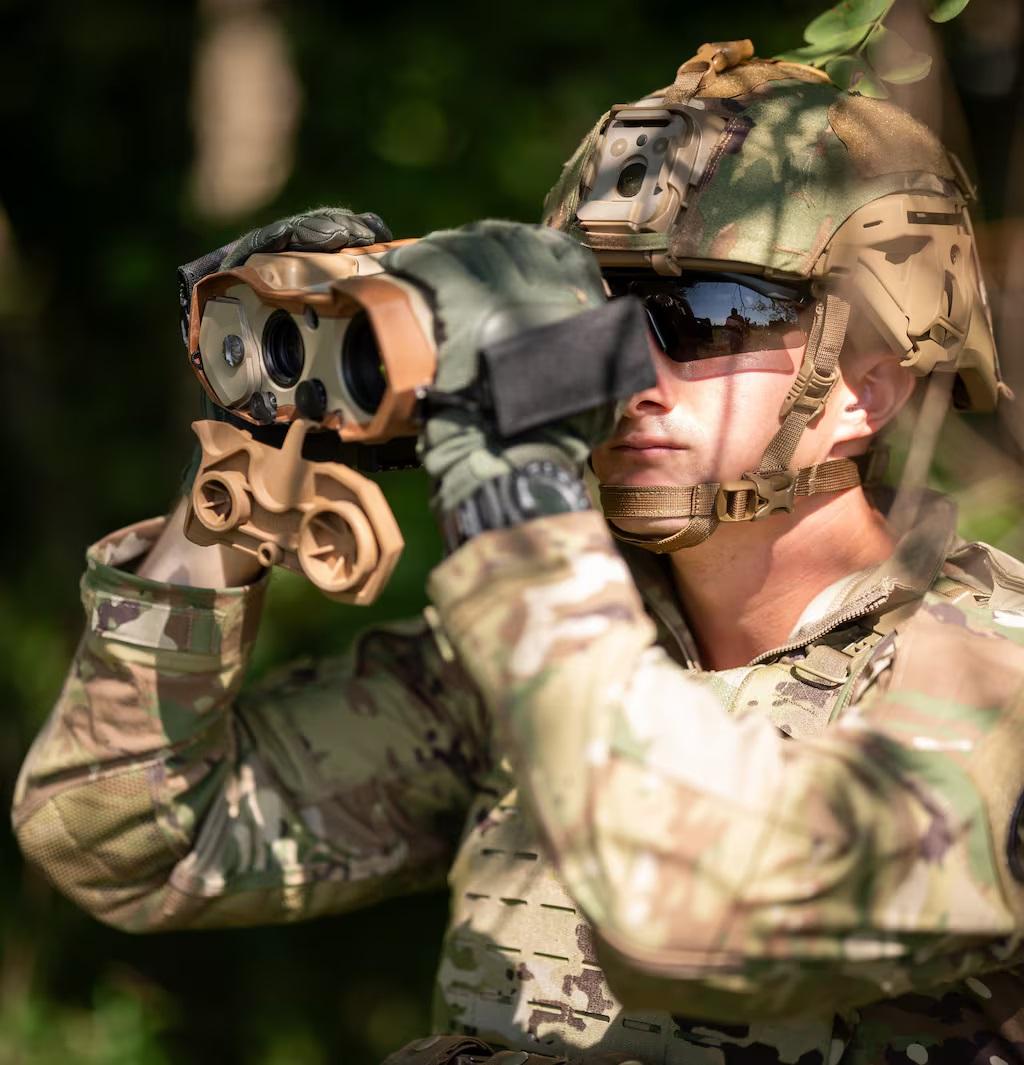
Das Laser Target Locator Module II (LTLM II) ist eine kleinere, leichtere Version seines Vorgängers, die von abgesessenen Soldaten für Zielinformationen unabhängig von den Wetterbedingungen verwendet wird. Die 82. Luftlandedivision testete die neue Version des Geräts in 2018, als die Army versuchte, die Last für abgesessene Truppen zu reduzieren.
Seit 2018 hat die US-Army 6.000 Systeme im Einsatz. Diese Systeme wurden an Kavalleriespäher und Infanteriekompanien innerhalb der Brigadekampfteams der Army ausgegeben. Letztendlich sollen bis zu 12.464 LTLM II-Systeme benötigt werden.
Joint Effects Targeting System
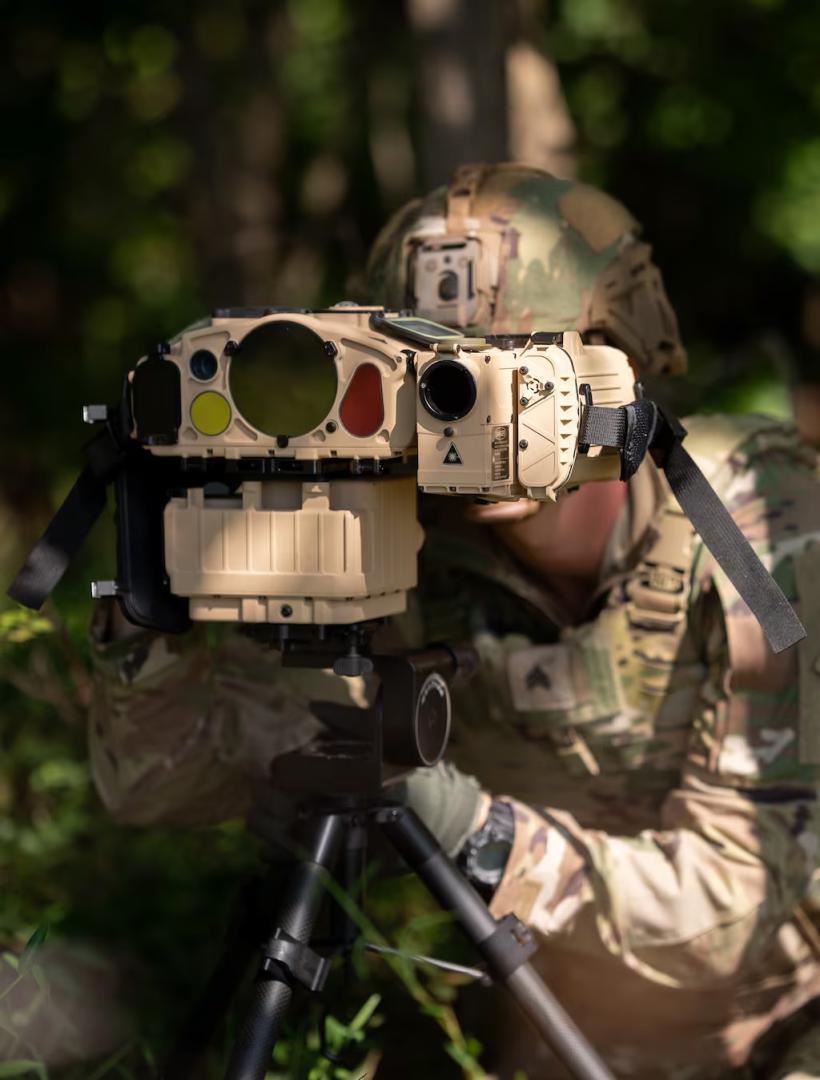
Das Joint Effects Targeting System, oder JETS, ist ein tragbarer, handgehaltener Zielmarkierer für den Einsatz bei Tag oder Nacht unter allen Wetterbedingungen. Vor der Einführung des Systems benötigten abgesessene Soldaten durchschnittlich 15 bis 20 Minuten, um ein Ziel zu lokalisieren, zu identifizieren und die Zielinformationen an einen Schützen zu übermitteln. Mit JETS kann ein Soldat dieselben Aufgaben jetzt in ein paar Minuten erledigen.
Das bestehende System wiegt weniger als 19 Pfund (ca. 9 kg), etwa die Hälfte des Gewichts seines Vorgängers. Die Army begann im Juli 2020 mit der Einführung von JETS bei der 75th Ranger Regiment. 278 Systeme sind bereits im Einsatz, weitere 498 sind auf dem Weg. Insgesamt sollen 3.550 Sets für die Truppe beschafft werden.
STUB Battery
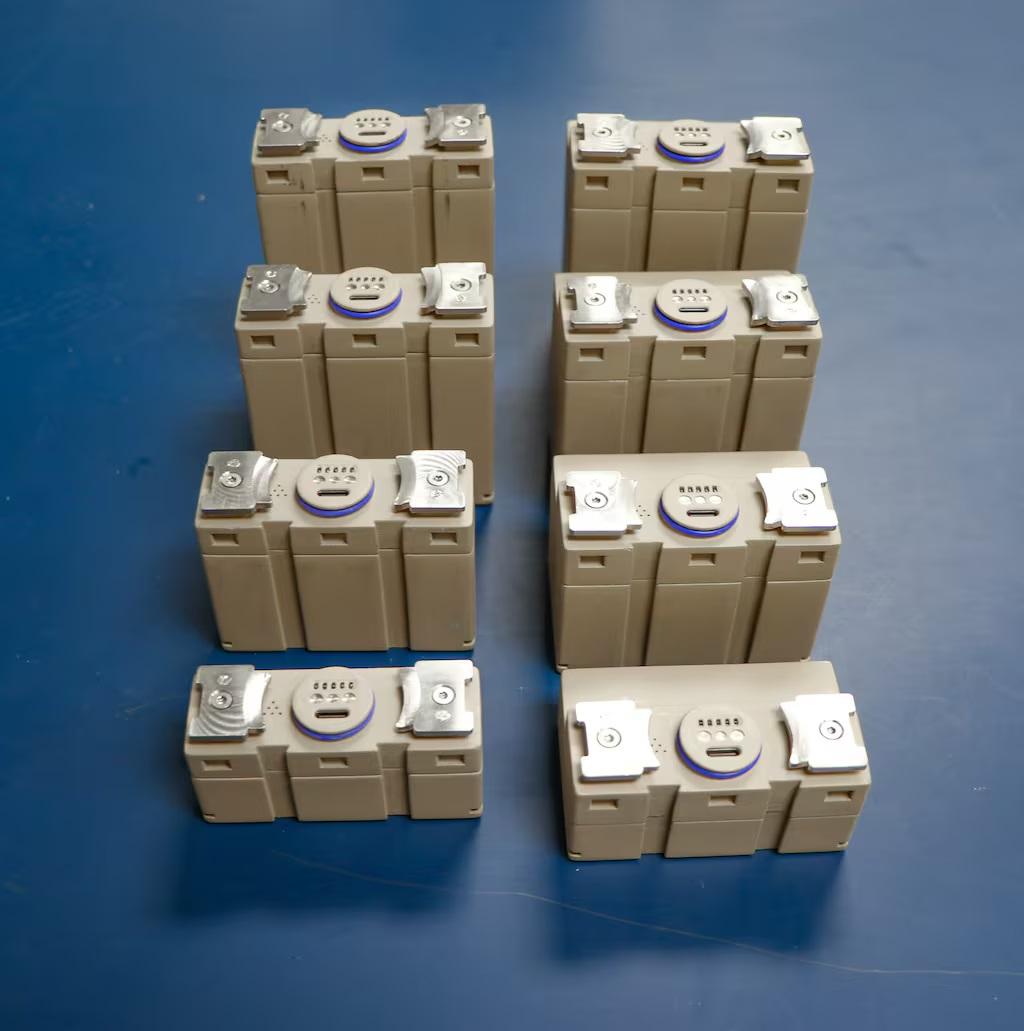
Jeder Soldat, der die vielen elektronischen Systeme der Army bedient, weiß: Jedes hat seine eigene Art von Batterie. Die Army arbeitet daran, die Batterietypen zu reduzieren bzw. zu vereinheitlichen. Ein Teil dieses Projekts ist das Small Tactical Universal Battery (STUB) Programm.
Die Army kündigte 2021 die Forschung zu einer solchen Lösung an. Das U.S. Army Combat Capabilities Development Command’s C5ISR Center entwickelt Prototypen der Batterie. Wenn diese Prototypen bei Tests erfolgreich sind, könnte die Army diese universellen Batterien bereits ab dem Fiskaljahr 2025 einsetzen.
Nett Warrior
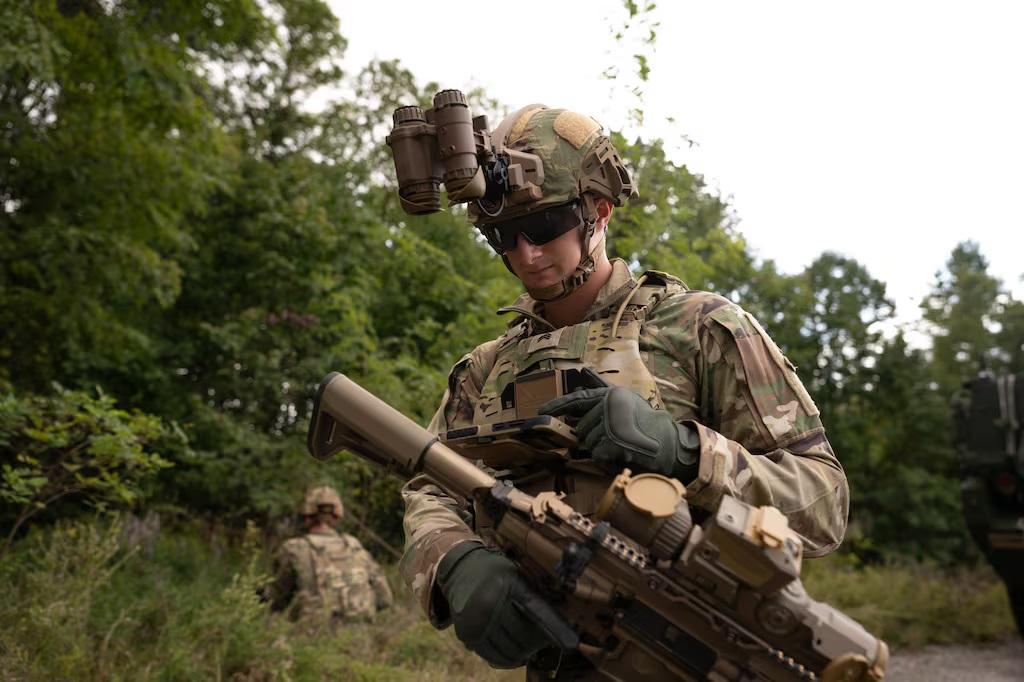
Die Army hat bisher etwa die Hälfte der Nett Warrior Smartphones an die Truppe ausgegeben. Das Android-Software-basierte Gerät läuft auf einem Samsung Galaxy S20-Handy. Das Handy ist in der Regel am Körper des Benutzers befestigt, um schnell auf Kartenwerkzeuge, Chatfunktionen und andere Apps zugreifen zu können.
Im Jahr 2023 begann die Army Software Factory, Teil des Army Future Command, soldatenentwickelte und von der Armee überprüfte Anwendungen für den Einsatz auf Nett Warrior durch ihren "app store" Watchtower hinzuzufügen. Das neuere Samsung Galaxy S23 tactical-edition Smartphone wird derzeit als nächstes Endbenutzergerät für Nett Warrior getestet.
Enhanced Night Vision Goggle-Binocular
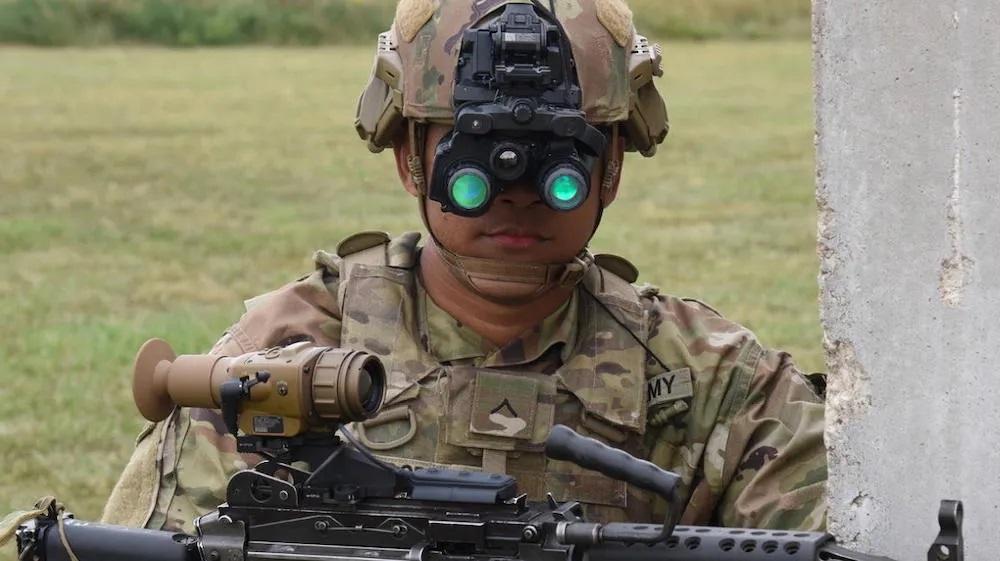
Das Enhanced Night Vision Goggle-Binocular (ENVG-B) ist das erste weit verbreitete binokulare Nachtsichtgerät der Army. Jahrelang mussten Frontsoldaten einfach mit den Tiefenwahrnehmungsproblemen zurechtkommen, die monokulare Geräte, hauptsächlich das PVS-14, mit sich brachten. Seit September 2023 wurden rund 4.000 Systeme an drei Infanterie-Brigade-Kampfteams ausgegeben.
Im November 2024 hat die Army geplant, dass die Hälfte dieser eingeführten Einheiten offline gehen und aufgerüstet werden. Diese werden 2025 mit einem erweiterten, aufladbaren Akku zurückkehren, der bis zu 20 Stunden betrieben werden kann. Derzeit kann das System weniger als acht Stunden oder weniger als drei Stunden im Verbund mit Nett Warrior-Software laufen.
Small Tactical Optical Rifle Mounted and Improved Night/Day Observation Device
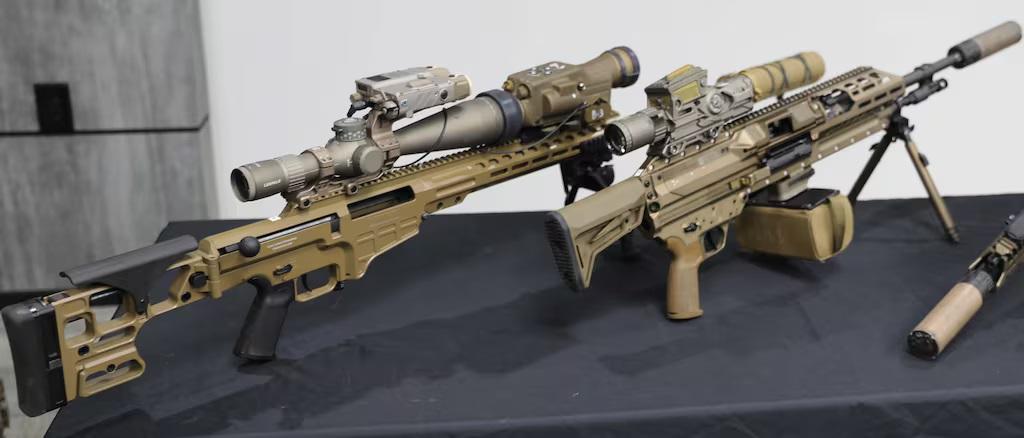
Für Scharfschützen wird das Improved Night/Day Observation Device (INOD) ab Dezember ausgegeben. Das Gerät wird vor das vorhandene Small Tactical Optical Rifle Mounted (STORM)-Optik am Precision Sniper Rifle montiert, um den Schützen ein Wärmebild zu geben. Mit dem thermalen INOD-Gerät können die Schützen durch Rauch, Nebel und sogar einige leichte Barrieren hindurchsehen, um ihr Ziel aufgrund der Wärmeabstrahlung zu finden.
Außerdem wird STORM auf die Version STORM II aufgerüstet, die es den Schützen ermöglicht, ballistische Informationen direkt in ihr Sichtfeld im Zielfernrohr zu erhalten. Wie INOD soll auch STORM II im Dezember ausgegeben werden. Andernfalls müssten die Schützen den Blick vom Ziel nehmen, um ein separates Gerät für diese Informationen zu überprüfen.
Das Auge nicht vom Zielfernrohr abzuwenden ist wichtig, weil die Suche nach dem Ziel, das sich bewegt haben könnte, wiederum die Fähigkeit der Scharfschützen verlangsamt, ein Ziel zu bekämpfen und sich schnell zu bewegen.
Die Army plant derzeit, mindestens 6.000 STORM II-Systeme und 3.000 INOD-Systeme in der Truppe einzusetzen.
SPARTANAT ist das Online-Magazin für Military News, Tactical Life, Gear & Reviews.
Schickt uns eure News: [email protected]
Werbung
Hol Dir den wöchentlichen SPARTANAT-Newsletter.
Dein Bonus: das gratis E-Book von SPARTANAT.


